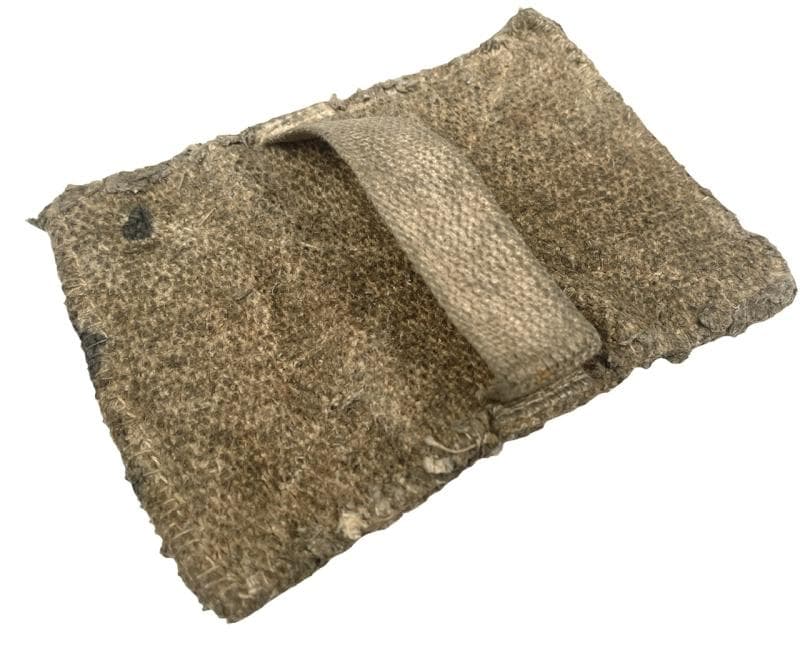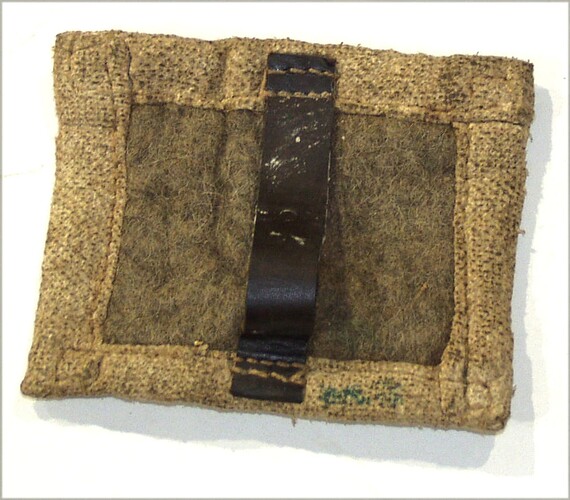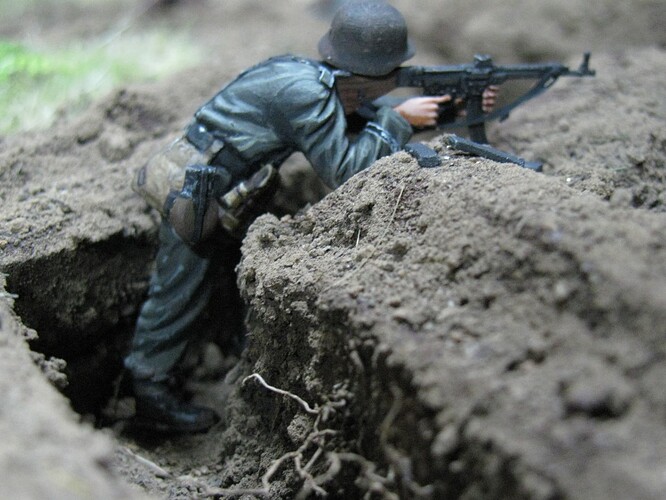Great link, thanks for sharing ![]()
I am amazed at the level of his details, which are very easy to miss.
The mitten I did notice, I imagine with such a small mitten they got a few burns inadvertently.
Considering the actual asbestos pad (not an actual mitten) was small in comparisson; chances of you getting a finger around that hot barrel were possible.
And it doesn’t look like the pads were a standard pattern, so sizes would vary according to the maker.
A barrel swap done by a skilled gunner would be quick; even with an MG34.
The MG42’s barrel change is quicker because of the design of both the barrel and the locking latch on the side. It definitely works when the MG is on a Lafette Tripod or even with the bipod on infantry usage.
Many a time a finger(s) or hand has come off worst … only takes a second to forget when moving position quick…
To answer my own questions, Trench Warfare by J.S. Smith is available on archive.org. It was written during World War I by a British officer and explains how major trench systems are planned, developed, expanded, and maintained. It goes into a lot of detail about subjects such as attacking enemy trenches, gas attacks, grenade use, drainage, rats, listening posts, observation, sleeping accommodations, troop rotation, and so forth. I am about two thirds through the book.
US Army field manuals better cover less developed positions. I will look for the German field manual referenced by paska.
archive.org has a lot of books on trench warfare and many other military subjects.
The second book is titled German Field Works of World War II by Bellona Publications, copyright 1969.
A couple of interesting notes, the Bellona book mentions that there was no spoil pile in front of the position, apparently having been carried away. The Osprey books states that boards were sometimes laid in front to “prevent dust from giving away the position”. ![]() Probably also served to maintain clear sight to the target area.
Probably also served to maintain clear sight to the target area.
Well, there is some logic behind that: if you pile freshly dug earth in front of a trench, you will most certainly give away your position. It will stick out like a sore thumb!
That’s why soldiers are taught to camouflage their positions with foliage from the surrounding area to blend in, preferably from behind the position. There are other ways of course including camo nets if available.
As a former Tanker I know nothing about this massive amount of work!
Death before dismount!
Haha
lol yes. Even a little digging by hand sucks….,
@Barney-Thank you sir and yes, the barrels get very hot. I used to check that out at night when wearing night vision. The barrels begin to heat up fairly quickly.
@Barney and Sableliger-yes the things get red hot and it becomes a judgment thing for the gunner when to make a change. If the enemy is close you have to keep up the rock and roll. But even then, if the barrels gets too hot it will actually sag. Then you really don’t know where the rounds are going. As far as the asbestos pad goes, yes it was small but so are the barrels. You can easily wrap your hand around the breech end and pull it out after you pop the release. Burns did occur. Sgt Basilone of US Marine medal of honor fame had severe burns on his arm from carrying a red hot 30cal while firing at a Japanese suicide charge in Guadalcanal. Sometimes a burn is worth your life.
@ general discussion-Once again, my main intent with this dio was to show a hasty field fortification in the late summer’44 on the eastern front. This is after Bagration and the German army has been severely reduced. They lacked almost everything, including warm bodies. The average unit was at around 30% effective. No time for elaborate measures. No cargo space for shovels or wire or wood or sandbags,etc etc. Most of the experienced leadership had assumed room temperature. And a book about WWI trenches would be fascinating it has no bearing on this subject here.
The main point to be made is the narrow zig zag nature of a WWII trench.The one drawing above shows this but it is a hedgehog position.
Removing the dug up dirt and carrying it somewhere else? Who was available to do that? Half the troops would be on defensive duty behind their weapons and the other half would be digging, bring up food or water, etc. There was not much need to conceal the trenches, the Reds knew where they were. It was not a Vietnam kind of ambush war at this point.
. Mine here could be part of that or part of a linear position, I only have so much room after all.
Thanks for all the interest so far Gents, model on,
J
Assist gunner before he gets put in place.
Us former “crunchies” learned to dig deep and dig constantly! However, I do not now, nor did I ever, begrudge you “diesel minks” your motor-stables! LOL!
A little bit of gardening work could go a long way. Also pretties-up the place! ![]()
![]()
![]()
Maybe that explains my adversity to yard work after leaving active duty lol
Outstanding as usual Jerry. Great to see you back !
Cavalry … its the only real way ![]()
A friend of mine - ex 5 INNIS DG - had 2 bumper stickers (not that he restricted their use to vehicle bumpers - he plastered them all over Force HQ in Belize, where we first met):
If you ain’t Cav you ain’t
and
Fractions don’t count
For those unversed in British Army humour/history the latter referred to the fact that the then, 5th Inniskilling Dragoon Guards were just about the only Royal Armoured Corps regiment that wasn’t now amalgamated with combined numerical regimental titles eg 13th/18th Hussars, 17th/21st Lancers, 14th/20th Hussars and so on and so on. It wasn’t quite the case but near enough to get a rise out of those who were serving in such regiments.
How he never quite got filled in I don’t really know.
getting more figures ready.
Hopefully this shows how narrow the thing is. Making it wider makes no ballistic/tactical sense. Deeper yes.
Just curious Jerry.
For smoothness detail (I personally) would place his mags on the left side for speedier changes as he is a right hand shooter. Was this done just for photography reasons?
Another spectacular figure in action.





